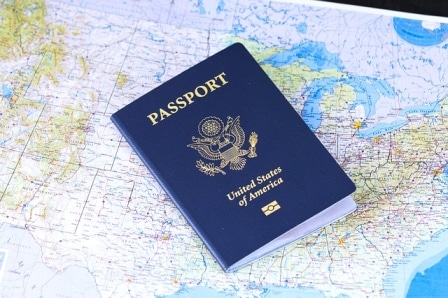The Investor Visa USA is a visa program that allows foreign nationals to live and work in the United States by investing a significant amount of money in a U.S. business, infrastructure projects, or boosting the country’s economic growth.
Foreign investors can receive temporary residency in exchange for capital investment, which, over time, can become a lawful permanent resident status. Investor visa programs provide direct investment opportunities for foreign investors to promote job creation or fix a troubled business, while also enabling sponsorship for immediate family members to gain permanent residence.
However, the immigrant visa application process can be difficult to navigate. Each US investor visa has different requirements and qualifying investment criteria, but we’re here to help. This guide can simplify the best investor visas on the market for immigrant investors.
Keep reading to learn about:
What is the Investor Visa USA?
The Investor Visa USA is an Immigrant Investor Program that, in some cases, can lead to permanent residence in the United States for the investor and their immediate family members, such as spouse or unmarried children. Immigrant investors make a qualifying investment in exchange for a Green Card.
There are different types of employment-based immigrant visas, but the primary ones include:
- The EB 5 Visa: Is an immigrant visa that requires investors to make a minimum investment of $1,050,000 (or $800,000 in a targeted employment area) in a new commercial enterprise that creates or preserves at least 10 full-time jobs for qualifying U.S. workers.
- The EB 2 Visa: Is a non-immigrant visa available to investors from countries that have treaties of commerce and navigation with the United States. To qualify, the investor must make a substantial investment in a bona fide enterprise and be actively involved in business operations.
Benefits of the Investor Visa USA
The U.S. Investor visa provides numerous direct investment opportunities for foreign investors who satisfy certain criteria. It can benefit foreign nationals in such a way that it can lead to lawful permanent residence and access to the U.S. market.
These benefits include:
- Green Cards: Investor visas, like EB-5, provide a path to a permanent resident status or a Green Card. A Green Card holder can live, work, or study anywhere in the U.S. without a work permit or an additional visa.
- Educational opportunities: The U.S. has some of the most prestigious colleges and universities providing top-quality education.
- Ease of travel: A permanent resident can travel in and out of the country anytime, making traveling to the U.S. efficient for leisure or business.
- Access to social benefits: Once you become a permanent resident through employment-based immigrant visas, you can use benefits such as Medicare, retirement, or Social Security.
- Potential for U.S. citizenship: Holding a Green Card for five years could help foreign investors become eligible for citizenship in the United States.
EB-5 Immigrant Visa

For foreign nationals to meet the residency criteria, they must make a substantial investment in a US business and create jobs for US workers. The company must be active and result in the creation of ten full-time jobs per EB 5 investor.
The US Congress established the EB5 Visa Program, also known as the Regional Center Program, to increase foreign investment, boost local economies, and support job creation in the United States.
For each investor, EB-5 investment projects must create at least one direct job and up to nine indirect jobs. Indirect refers to jobs that are created as a result of the project through external labor to service the project by providing goods and services. These jobs must be calculated according to economic models approved by the immigration service.
The EB-5 Visa leads to permanent residence for successful applicants who want to get US citizenship by naturalization. After being a lawful permanent resident for at least five years, foreigners can apply for citizenship and own a US passport, which is one of the most powerful passports in the world.
By participating in the EB 5 Visa program, you have the opportunity to obtain a Green Card by investing directly in a job-creating commercial enterprise or investing through Regional Centers approved by United States Citizenship and Immigration Services.
Petition Filing Date | Minimum Investment Amount | Targeted Employment Area Investment Amount | High-Employment Area Investment Amount |
Before 15 March 2022 | $1,000,000 | $500,000 | $1,000,000 |
On or After 15 March 2022 | $1,050,000 | $800,000 (infrastructure projects included) | N/A |
How does the EB 5 Program work?
The EB-5 program is open to immigrant entrepreneurs willing to make a substantial investment in a qualifying new commercial enterprise in the United States.
To qualify for the EB 5 program, the minimum required investment is set at $1,050,000. However, if your investment is made in a Targeted Employment Area (TEA), which are areas with high unemployment or rural areas, the minimum investment is reduced to $800,000. The fair market value of all capital invested is calculated in US dollars.
Typically, the business structure of the new commercial enterprise will be a limited liability company or limited partnership, but other businesses with other structures, such as a sole proprietorship, a corporation, a joint venture, a holding company and its wholly-owned subsidiaries, or a business trust, could also qualify.
With your capital investment, you must create at least ten jobs for American workers, and you should demonstrate this in your business plan.
There are no specific education or language requirements for this immigrant investor program. But you must be able to demonstrate the lawful source of your investment funds (the investment money can include loans or gifts. You can also include a promise to invest, known as a promissory note) with required documents such as bank statements and meet the program’s investment thresholds.
There are two main paths you can choose for the immigrant visa: You can invest individually or through a Regional Center.
Individual investment
This option is most suitable if your main focus is to establish a new commercial enterprise or continue a commercial business activity in the US, and you want to maintain full control over investments as well as get a return on your invested capital.
If you choose this option, you must develop a commercial enterprise initially capable of direct job creation. It should create ten full-time jobs for US citizens and lawful permanent residents.
Regional Center Program
Investing through a designated Regional Center Program may be an excellent option if you plan not to be involved in the daily operation of the business, want to be mobile in geographical terms, and if the business venture you are interested in is not capable of creating ten direct jobs for US citizens and lawful permanent residents from the start.
The Department of State has estimated that more than 90 percent of EB 5 Visa applications have been made by immigrant investors working with Regional Centers. This is a popular option because working with Regional Centers means the job creation requirements are easier to meet: Your investment can create ten jobs either directly or indirectly.
Another advantage of working with a Regional Center is that they work with individual investors and their immigration lawyer(s), providing them with advice and helping them to compile the necessary documentation throughout the entire EB 5 Visa application process.
As of April 2023, the United States Citizenship and Immigration Services had approved 640 Regional Centers. As the Regional Center will be responsible for managing your capital investment, it is crucial that you do due diligence when you are selecting which of those Regional Centers to invest with.
EB-5 Visa cost
Apart from the capital investment, several other expenses and fees make up the total cost of participating in the EB 5 program. Depending on the applicant’s location, the total cost can vary from $21,130 to $22,225 for the Immigrant Investor Program.
For applicants in the United States (status adjustment), the costs of the EB-5 Visa may include:
- Form I-485: $1,440
- Form I-526: $11,160
- Form I-829: $9,525
Total cost: $21,130
For applicants in foreign countries (Consular processing), the costs of the EB-5 Visa may include:
- Form DS-260: $325
- Form I-526: $11,160
- Form I-829: $9,525
- Affidavit of Support Fee: $120
Total cost: $22,225
Note: These total costs don’t include administrative fees or the minimum investment amount for the EB-5 program and are subject to change.
What is a Targeted Employment Area?
A Targeted Employment Area (TEA) is a geographic area designated by state authorities or through approval from the US Citizenship and Immigration Services (USCIS). TEAs are areas that have high unemployment rates or are rural areas.
Investing in a Targeted Employment Area allows you to benefit from the lower minimum capital investment threshold to $800,000.
Here are a few things for an area to be considered a Targeted Employment Area through the EB-5 Program:
- The US Citizenship and Immigration Services determines that a qualifying rural area is any area other than an area within a standard metropolitan statistical area or within the outer boundary of any town or city that has a population of 20,000 or more.
- Meanwhile, for immigrant petitions filed before March 15, 2022, high unemployment areas are locations (a census tract or a combination of census tracts) within metropolitan statistical areas that have experienced an unemployment rate of at least 150 percent of the national average.
- For immigrant petitions filed on or after March 15, 2022, a high unemployment area is an area designated as such by the Secretary of Homeland Security.
E-2 Treaty Investor Visa
The E-2 Visa is a non-immigrant visa that allows foreign investors with significant funds to invest in the US and set up a business, practice, or office, as treaty investors.
Benefits of the E-2 non-immigrant visa include a quick visa processing timeframe, the ability for the investor to live in the US with family members (i.e., unmarried children or spouse), and a lower investment threshold (roughly $85,000 to $100,000).
The E-2 non-immigrant visa can only be obtained by citizens of E2 visa countries, which have signed a treaty with the United States.
While the E-2 does not provide residency, one of the biggest advantages of the E-2 non-immigrant visa is that it can be extended indefinitely, for as long as the business investment is maintained. Meaning that, as the primary investor, you and your family members can live freely in the United States.
How does the EB 2 Visa work?
The E2 Visa is a non-immigrant visa, which means it is temporary. You are not eligible for permanent residency because you don’t get a direct path to a Green Card. To get this non-immigrant visa, you must prove to the embassy that your intent in entering the US is just to work and live temporarily.
To meet the E-2 Investor Visa requirements, you must invest a significant amount of capital in a bona fide enterprise in the US to promote economic growth. There’s no specific minimum investment required, but it must be sufficient to ensure the successful operation of the business.
Some E2 applicants invest at least $85,000 to $100,000 or over, depending on the enterprise.
A “bona fide enterprise” refers to a real and active business that makes goods or provides services for profit. You should prove in your business plan that it meets all of the legal requirements to operate in its area.
Moreover, the E-2 investment must meet the following criteria:
- The investment must be classified as a real operating enterprise, rather than a passive or speculative investment.
- The funds you invest must be at risk and committed to the enterprise, meaning that you must have a personal financial stake in the success of the business.
- The investment cannot be marginal or an idle investment. It means the enterprise should be established for more than just the purpose of supporting you and your family members.
- The investment capital must be lawfully acquired. In other words, you cannot use money obtained through illegal means.
- The business should have profitability, being able to generate more than enough income to provide a living for you and your family members, as well as boost economic growth.
- As the primary investor, you must be actively involved in the development and direction of the enterprise.
- You must own at least 50 percent of the enterprise or have operational control through a managerial position.
E-2 Visa Cost
The costs for the E-2 non-immigrant visa depends on where you are applying from, and whether premium processing is requested.
The main cost is the investment itself. Even though there is no set minimum amount, we can consider $85,000 to $100,000 as a starting point for the E-2 non-immigrant visa.
Other fees with the US Citizenship and Immigration Services may include:
- Form I-907 (premium processing): $2,805
- Form I-129: $460
- Form I-539: $420
- Biometrics fee: $85
Note: These fees are a general estimate and subject to change.
US Investment Opportunities
Investment opportunities in the US for the EB-5 and E-2 visa programs offer diverse prospects in various sectors. Both programs carry immigration risks, like visa denial or policy changes. Potential investors should conduct thorough research, seek legal and financial advice, and assess their risk tolerance. Unlike the EB-5 visa, the E-2 visa does not have specific job creation requirements.
EB-5 Visa Opportunities
- Real estate development: EB-5 investors often choose real estate projects like hotels or commercial properties, offering returns through property value and rental income. Risks include market downturns and investment project issues.
- Franchise businesses: many EB-5 investors invest in franchises (restaurants, hotels etc.). Franchises offer a proven model and steady returns but faces competition and franchise-specific challenges.
- Technology startups: The technology sector, including biotechnology, IT, and renewable energy, presents opportunities for EB-5 investments. Startups offer high-return potential but come with significant risks and no guaranteed success.
E-2 Visa Opportunities
- Franchise ownership: E-2 visa holders often invest in well-known franchise businesses due to their established systems and support. These opportunities can provide stable cash flow and moderate returns, but the success of the investment heavily depends on the chosen franchise and location.
- Retail and service businesses: E-2 investors may opt for businesses in the retail or service sector, such as restaurants, retail stores, or consulting services. These enterprises can offer a reliable income stream and moderate returns. However, market fluctuations, competition, and local demand may affect financial performance.
- Consulting and professional services: E-2 investors can establish or acquire consulting and professional service firms. These ventures may provide steady income and returns. However, competition and market demand for specific services can impact financial outcomes.
What is the Investor Visa USA processing time?
The total processing time for the EB-5 Visa varies case by case. But, it often takes from 30 to 61 months for Form I-526 applicants. The processing time depends on the investor’s location and investment type. For example, the processing time for TEAs in rural areas can be shorter. Rural area investment often qualifies for priority processing.
The E2 Visa processing time ranges from 22 months to a couple of years. But, it also varies case by case. For example, employment visa applications for Form I-485 can take seven to 32.5 months. If you apply from a foreign country, your case will be moved to the National Visa Center (NVC). This process can take longer depending on your home country.
What are the differences between EB-5 and E-2 Investor Visas in the US?

- The E-2 Visa is a non-immigrant visa, while the EB-5 Visa is an immigrant visa. The EB-5 is one of the residency by investment and citizenship programs that can help a foreigner settle on U.S. soil.
- The E-2 is only available to people of some nationalities, depending on whether the respective country holds an E-2 treaty with the US. Meanwhile, the EB-5 Visa is open to everyone.
- The EB-5 Visa minimum investment is $800,000. The E-2 Visa has no minimum investment threshold. You just need to make a substantial capital investment.
- The EB-5 Visa requires that you create ten full-time jobs for US citizens or lawful permanent residents. The E-2 Visa has no job creation requirement. Instead, the E-2 Visa requires that your business not be marginal or idle.
- Both the E-2 and EB-5 Visas need your investment funds to be lawful. You must prove this with relevant documents.
- The visa application processing time is faster for the E-2, with some applications being processed in as little as 15 days. Meanwhile, the EB-5 Visa takes up to two years to be approved.
- With an E-2 non-immigrant visa, you, as the principal investor, can only work for the E-2 company. With an EB-5 Visa, you can work for any company.
Our Investment Green Card guide provides a more detailed look at how to get a Green Card with an Investor Visa.
Tips for a Successful Investor Green Card Application
The most common reasons that US Citizenship and Immigration Services reject investor applications include:
- Providing inaccurate or conflicting information
- Failing to provide crucial documents and evidence
- Lacking the necessary investment funds or failing to invest the required amount
- Using funds from illegal sources for investment
- Having a history of criminal offenses or prior violations of US visa regulations
Applying for an EB-5 Visa can be complex, so it’s important to thoroughly research Regional Centers and investments and prepare well for your visa interview. To meet all requirements and gather the right documentation, it’s best to consult with an experienced investor visa lawyer who specializes in investment-based immigration.
Why work with Global Citizen Solutions?
Global Citizen Solutions is a boutique investment migration consultancy firm focused on finding the right residency or citizenship by investment program for individuals wishing to secure their future and become global citizens. With offices in Portugal, the United Kingdom, Hong Kong, and Brazil, our multilingual team guides individuals and families from start to finish, providing expert advice considering freedom, mobility, taxation, and security.
- We have helped hundreds of clients from 35+ countries in all the top Residency by Investment and Citizenship by Investment programs. With an in-depth and comprehensive understanding of the area, we provide our clients with solid guidance. We have a team of immigration lawyers, and immigration advisers specialized in US immigration.
- Our team has never had a case rejected. Our 100 percent approval rate sets us apart from our competitors and guarantees that you can expect a successful application.
- Our transparent pricing covers all the processes from opening your bank account, document certification, and legal due diligence to investment and submission. As there is one fee for the entire process, you can be confident that you will not face any hidden costs later.
- All data is stored within a GDPR-compliant database on a secure SSL-encrypted server. You can be safe knowing that your personal data is treated with the utmost security.
- Global Citizen Solutions provides an all-encompassing solution. Our support can continue even after you receive your passport. We offer additional services such as company incorporation, Trusts, and Foundations formation.
- The BeGlobal Onboarding System® allows you to access the status of your application every step of the way, something that sets us apart from our competitors.

Frequently Asked Questions About US Investor Visas
What are US Investors Visas?
Immigrant investors can pursue investor visas via the EB-5 Visa or an E2 Visa. EB-5 provides a path to a Green Card and permanent resident status through investment in a business, commercial enterprise, or practice to boost job creation. E2 is a non-immigrant visa for foreign investors who prefer to actively manage a U.S. business.
How to get USA investor visa?
To get an EB-5 Visa, foreign investors must provide a minimum investment amount in a new commercial enterprise. The capital funds should create a stable foundation for direct job creation, or at least 10 full-time jobs for American employees. This investment project allows the investor to become a Conditional Permanent Resident.
What are employment-based immigrant visas in USA?
EB visas are employment-based immigrant visas, such as the EB-2 or EB-5 Visa. The EB-5 program and EB-2 are for-profit, actively formed companies that require a significant investment or expertise to create jobs for U.S. workers. These employment-based immigrant visas apply to both existing businesses and new ventures.
How much do I need to invest in USA to get a visa?
There are different visas for different types of immigrant investors. The minimum amount for the E-2 is around $85,000 to $100,000, while for an EB-5 immigrant visa, this amount rises to between $800,000 and $1,050,000. Foreign investors need a substantial net worth to reach the minimum investment amount.
Does the US have an investor visa?
Yes, the US offers a few non-immigrant and immigrant visas to foreign nationals planning to contribute to the US economy. The EB-5 immigrant visa offers the chance to secure a Green Card. The E-2 is a non-immigrant visa specifically for foreign investors from designated treaty countries.
Can I get US citizenship by investment?
The United States doesn’t have a citizenship by investment program. But if you are granted an EB-5 Visa through the Immigrant Investor Program, then you can, after a number of years of living in the country, request naturalization and gain citizenship.
What are the US investor visa requirements for immigrant investors?
The main requirement is to make a substantial investment in a commercial enterprise in the United States. To become an E-2 treaty investor, you must be a citizen of one of the treaty countries and make an investment of roughly $100,000.
The EB-5 Visa requirements include: creating at least ten full time jobs and a minimum capital investment of $800,000, whether as a direct investment or through a regional center.
What is US Citizenship and Immigration Services' role in processing visas?
US Citizenship and Immigration Services, which operates under the Department of Homeland Security, plays a vital role in processing visas. They assess eligibility, review required documents, and make determinations for immigrant visas and Green Cards. US Citizenship and Immigration Services also manages the adjustment of status petition processes.
Do I need background checks due to national security concerns?
USCIS requires all prospective immigrants to undergo background checks and abide by immigration law. These checks review criminal records, fingerprints, and personal information to ensure you are not involved in financial crimes or pose any national security concerns.
Do I need a Social Security Number for the EB-5 Immigrant Investor Program?
No, you can request a Social Security Number after obtaining the EB-5 Visa. In fact, you have the option to make this request while completing the visa application. The EB-5 Visa allows for both indirect and direct investment.
What is the best US Investor Visa?
The EB-5 Visa is the best US investor visa for those seeking lawful permanent resident status. You must invest, or actively be in the process of investing, $1,050,000 (or $800,000 in a Targeted Employment Area) in a new commercial enterprise that will bolster the US economy and generate at least ten jobs for employees.
What is the priority date and the filing date for the EB-5 Program?
In the EB-5 Program, the priority date and filing date are key milestones in the Green Card process:
- Filing date: This is the date USCIS receives your Form I-526. It is the day you submit your EB-5 application.
- Priority date: This is the same as your filing date. It marks your official place in line for a visa number.
Does an Investor Visa USA grant immediate permanent residence?
No. The EB-5 program grants Conditional Permanent Residence status. After two years and meeting certain criteria, EB-5 immigrant investors can apply to become lawful permanent residents. They can also sponsor family members, like spouses or unmarried children, to accompany them to the U.S.


